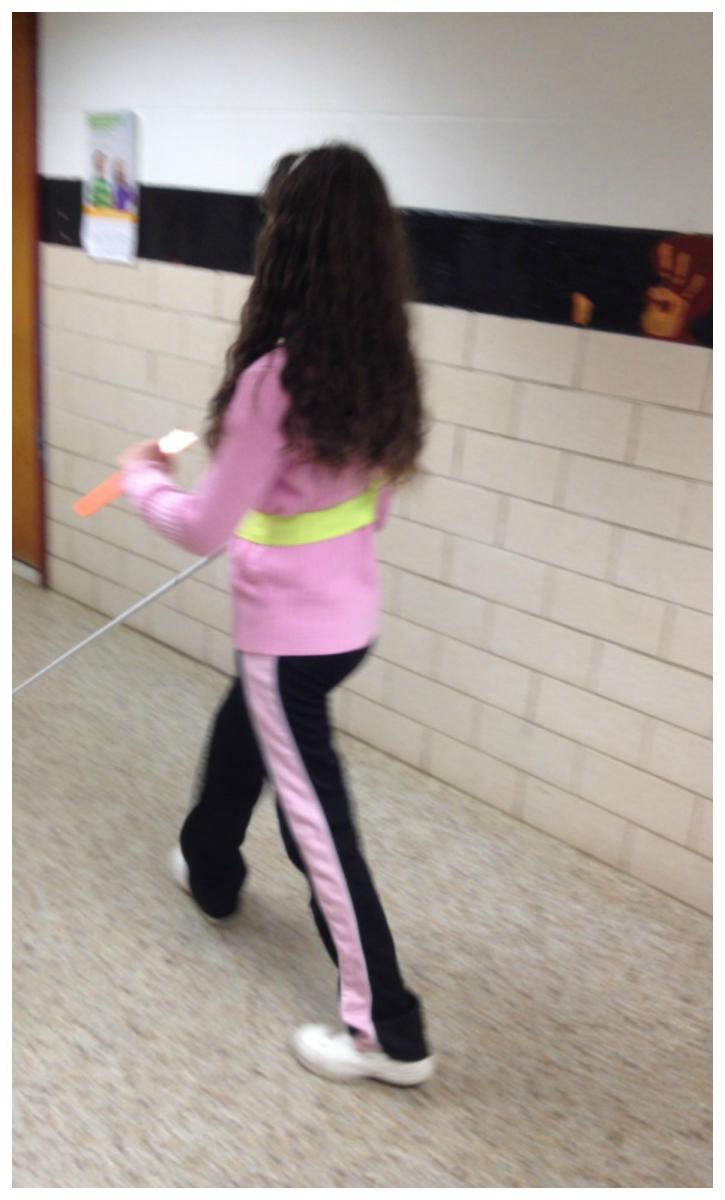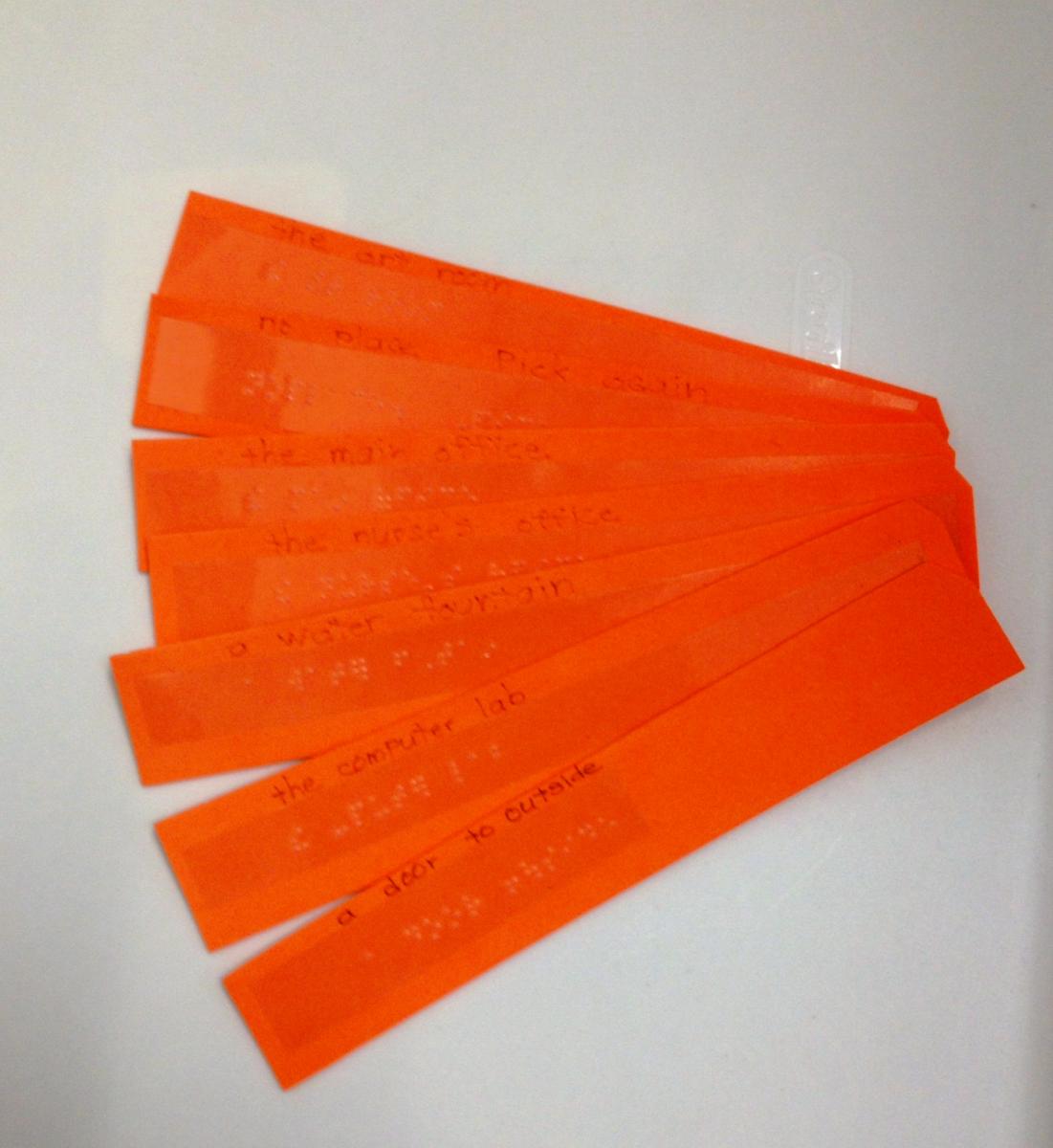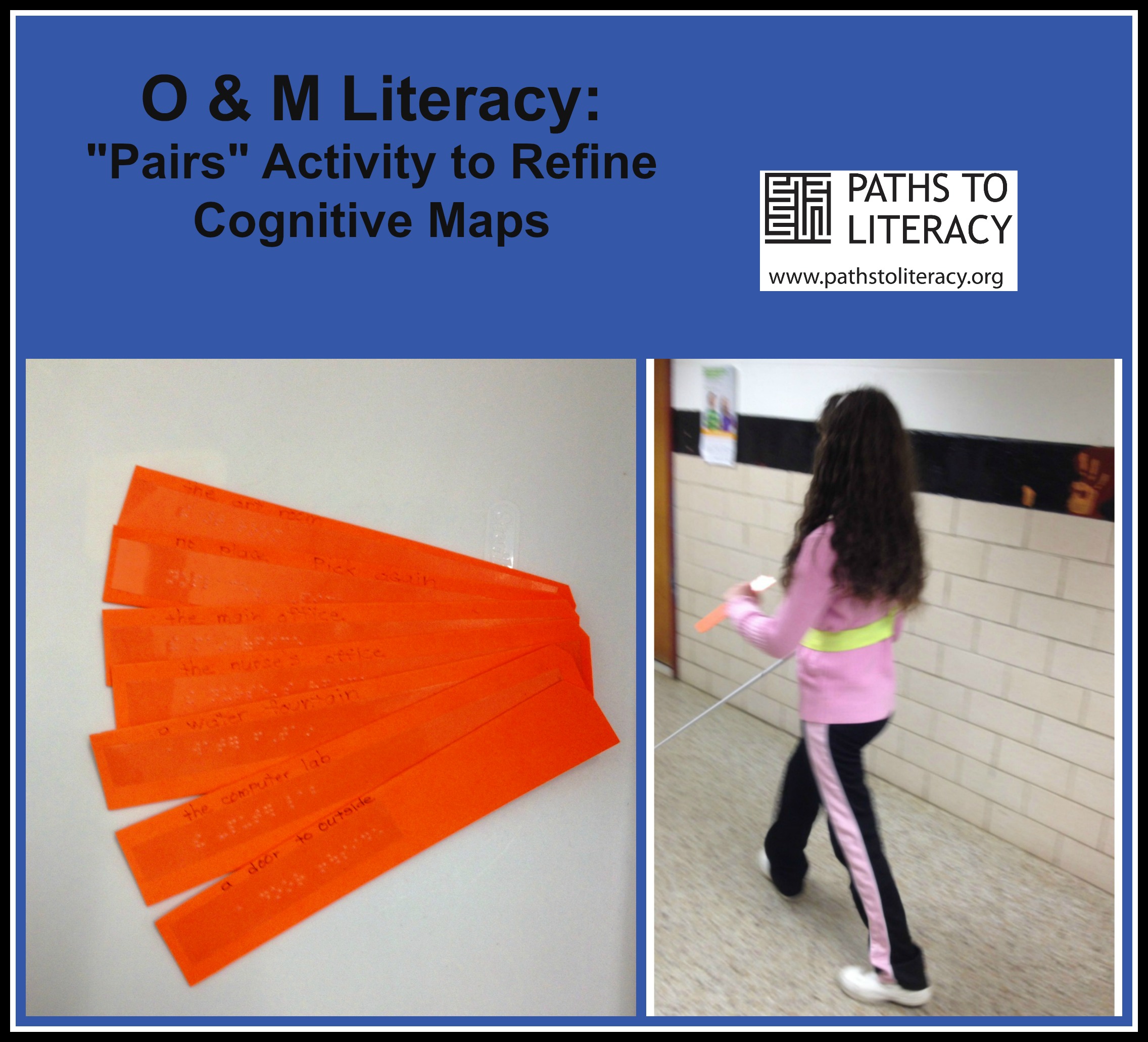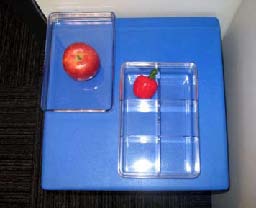“Pick two of these cards. Which do you think is fastest to walk to?”
Learning Objectives: to refine students’ cognitive maps of their schools and to develop their estimations of time lapsed
- a stopwatch (I use my phone)
- a way to jot down walking times
- a long cane or optical devices as needed
- cards with names of school destinations in the student’s reading medium. Many schools have the following locations: the gym, the art room, the main office, the cafeteria, any water fountain, the library, a conference room, a computer lab, a music room, and any door to the outside. Just for fun, I also include cards that say, “teacher choice,” “student choice,” and “no place, pick again.”

- From a homebase such as a homeroom or the main door to the school, the student randomly picks two cards and reads them, then estimates which is faster to walk to.
- The student then walks to the first destination while the teacher uses a stopwatch for time walked and then jots down this time.
- The student then returns with the teacher to homebase and walks to the second destination while the teacher again times him or her and jots down the time.
- The student is encouraged to walk at a typical (not the fastest) rate. If the student becomes disoriented or distracted, he/she returns with the teacher to the starting point and begins again with the time re-set to zero.
- The teacher and student then discuss the two times, and which route was faster.
Variation #1: Before each route, the student estimates how long the route may take, and compares this to how long it actually took. Estimates tend to become more and more accurate as feedback is given.

Variation #2: If lesson time allows, repeat with more Pairs of destinations. After several Pairs have been walked and timed, it can be fun to sequence all the cards that were walked from least to greatest amounts of lapsed time. The student can sequence them, or ask a classmate or adult to do this. On a recent O&M lesson, my student’s times were: homeroom to an outside door – 35 seconds, homeroom to music room – 1:16 minutes, homeroom to computer lab – 1:17 minutes, homeroom to the gym – 1:35 minutes, homeroom to nurse’s office – 2:28 minutes, and homeroom to the art room – 3:43 minutes.
Variation #3: To show student progress or regression in skill, it can be helpful to compare time lapses for the same route throughout a school year, including before and after significant breaks.




